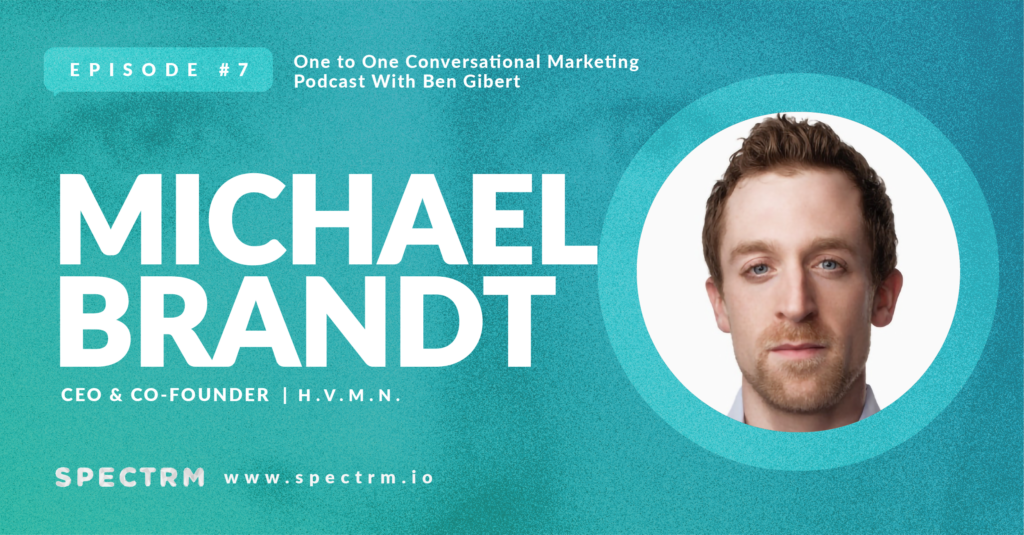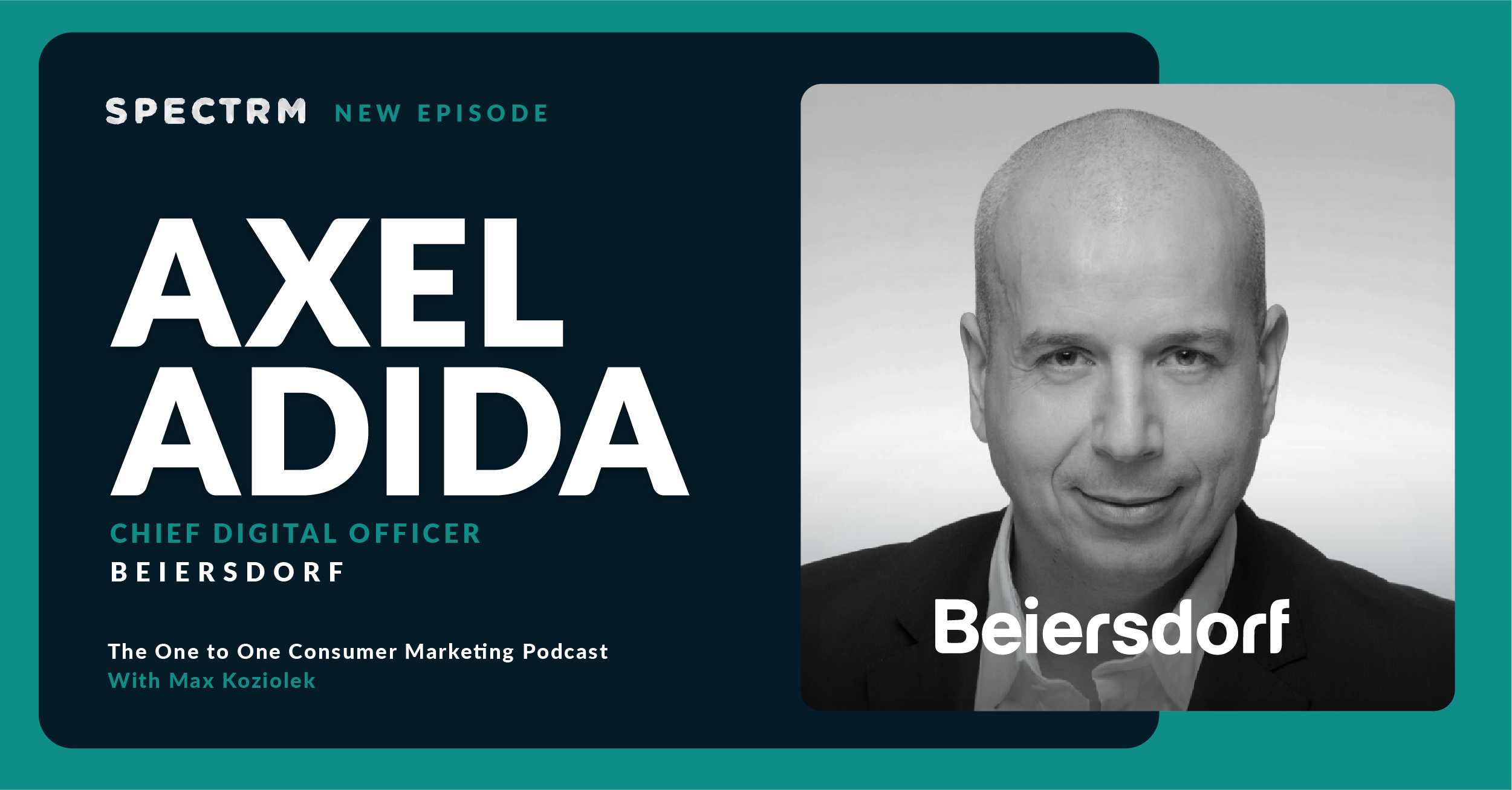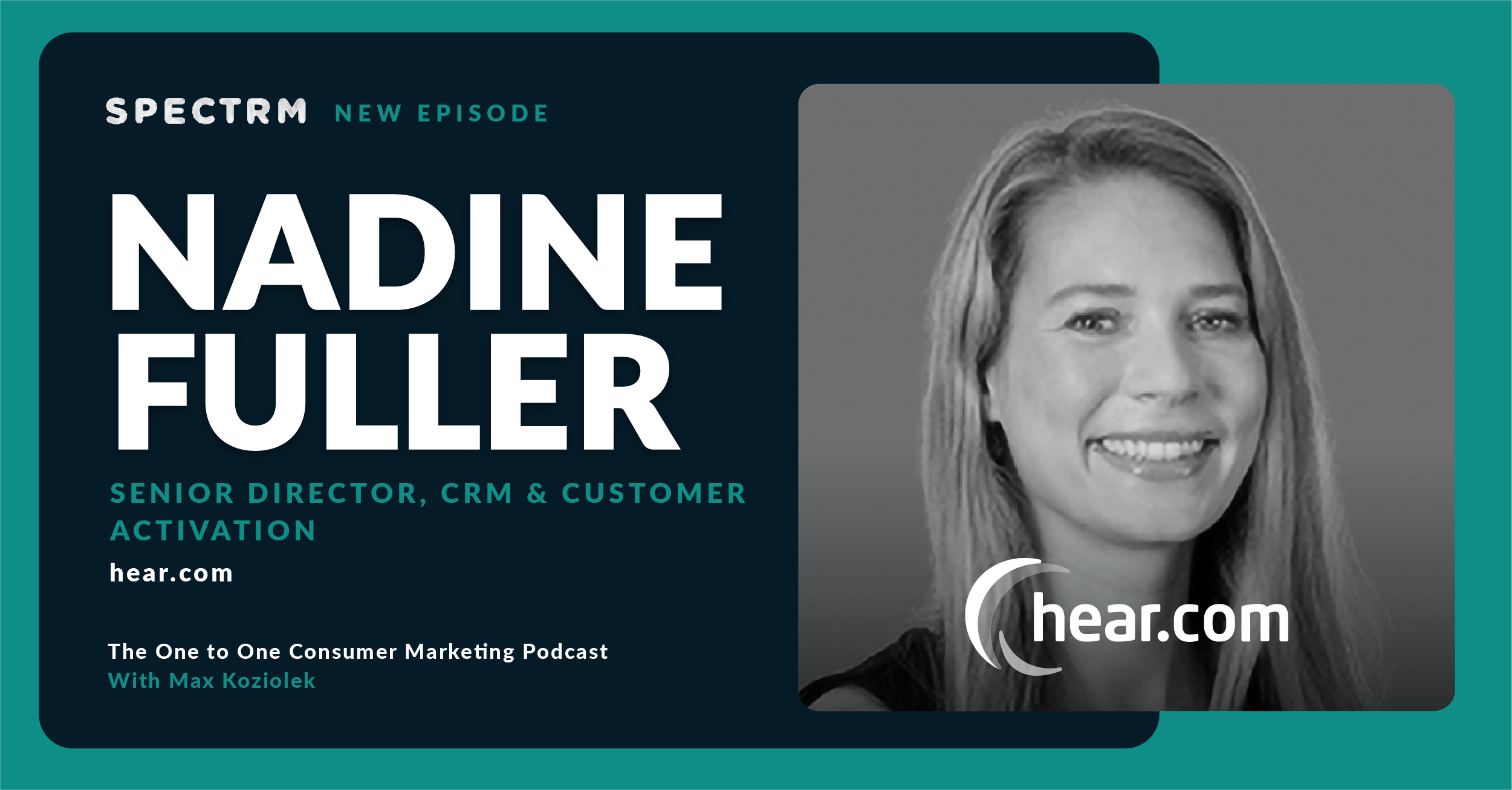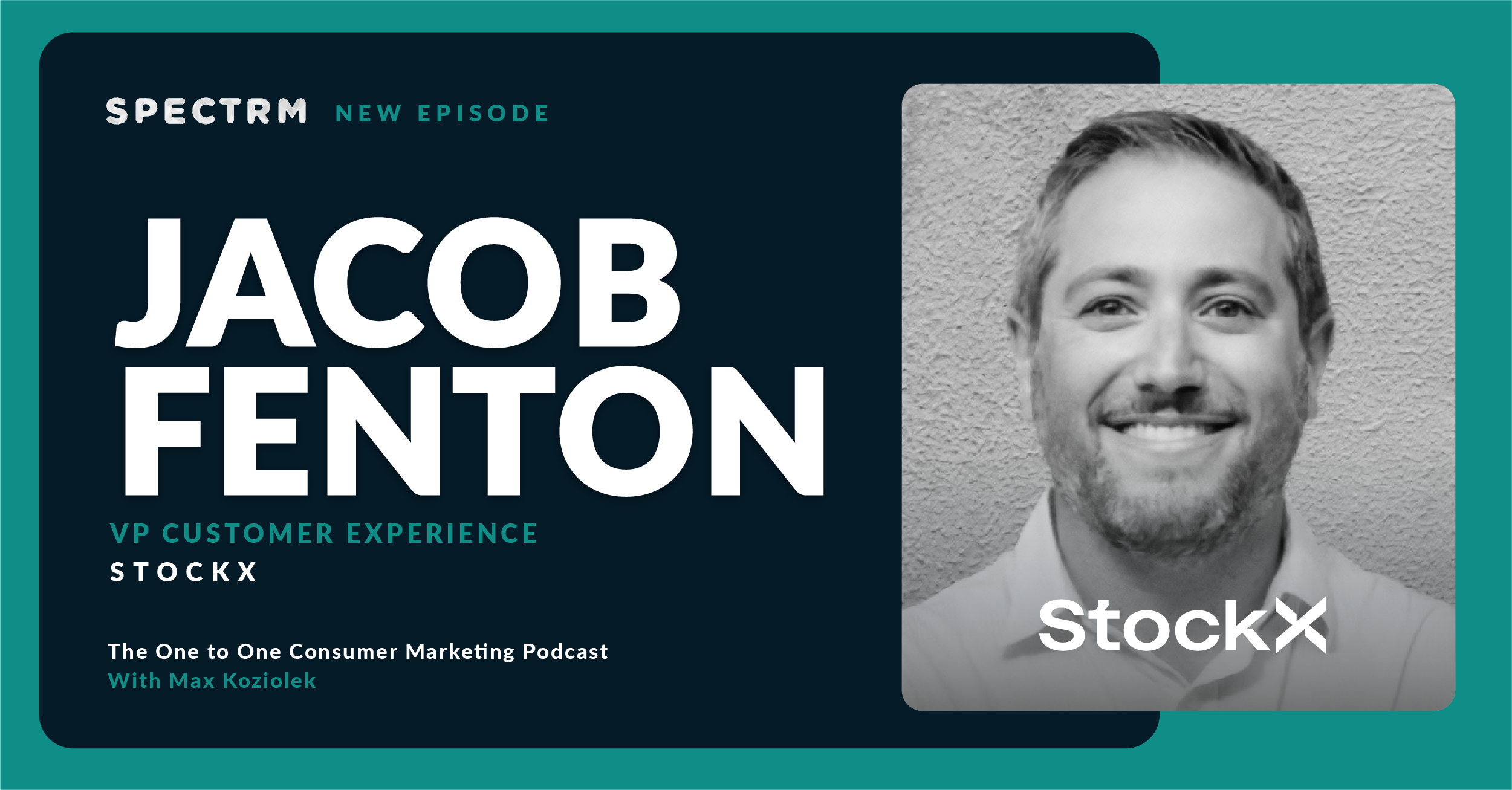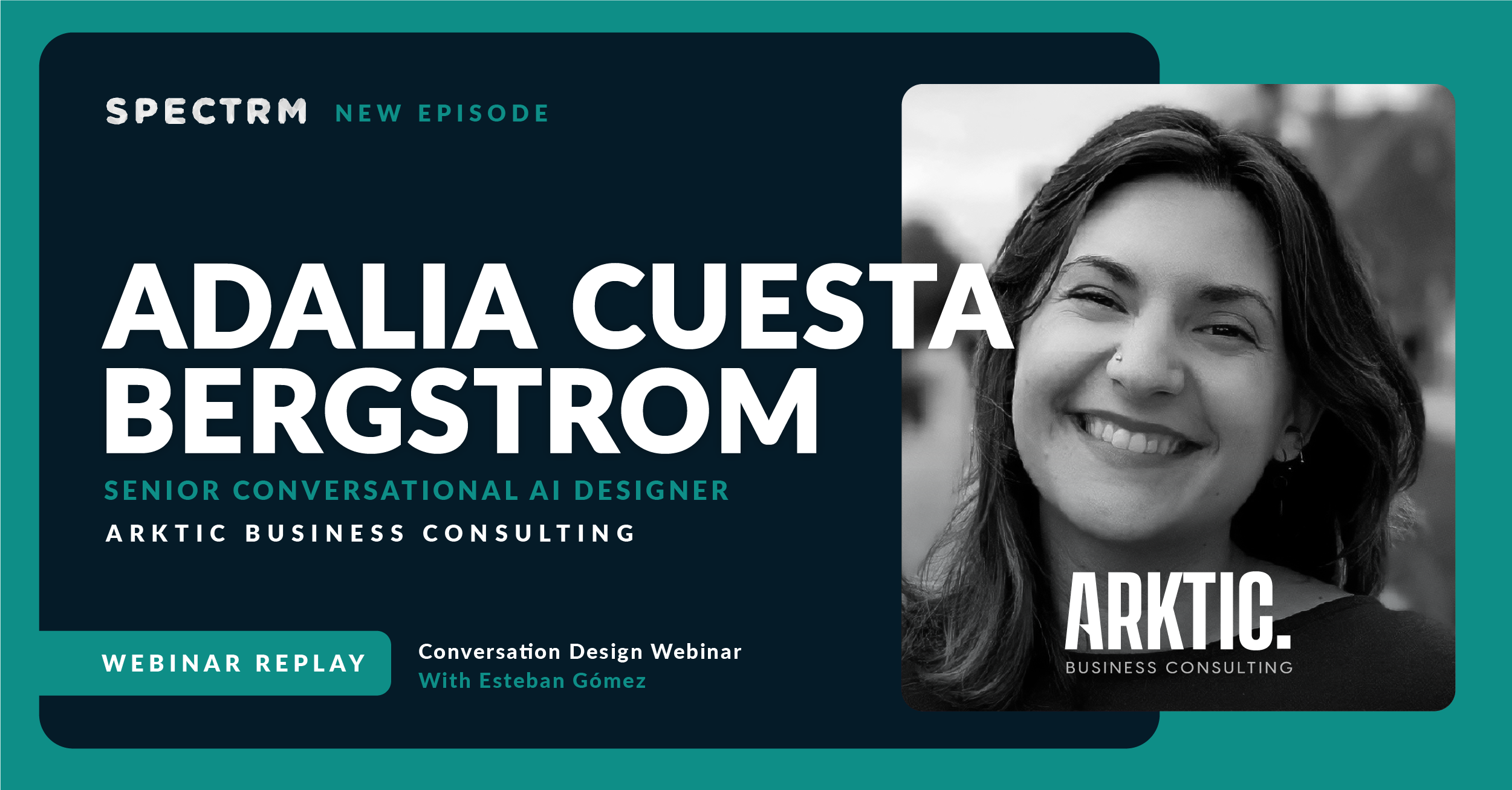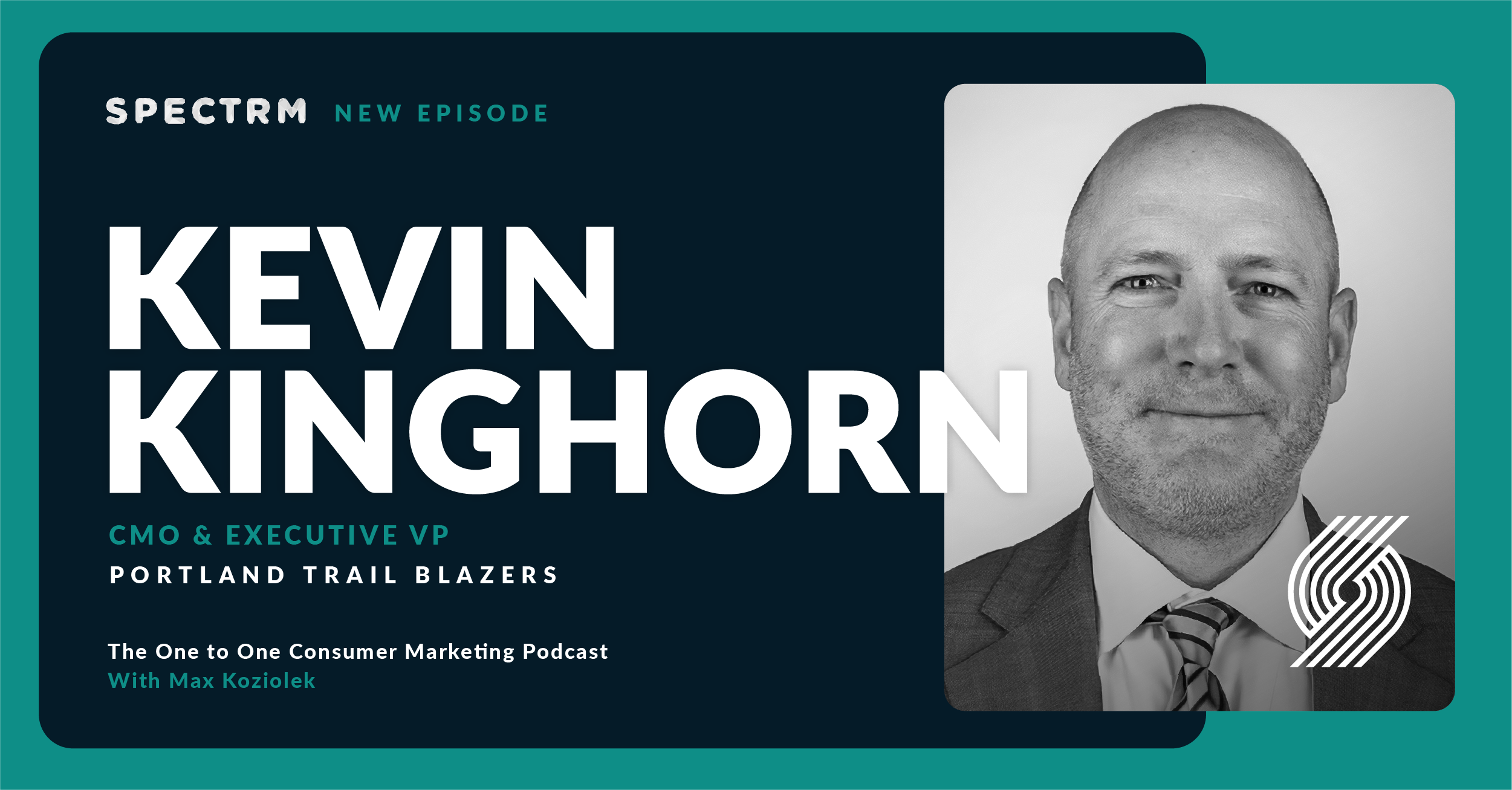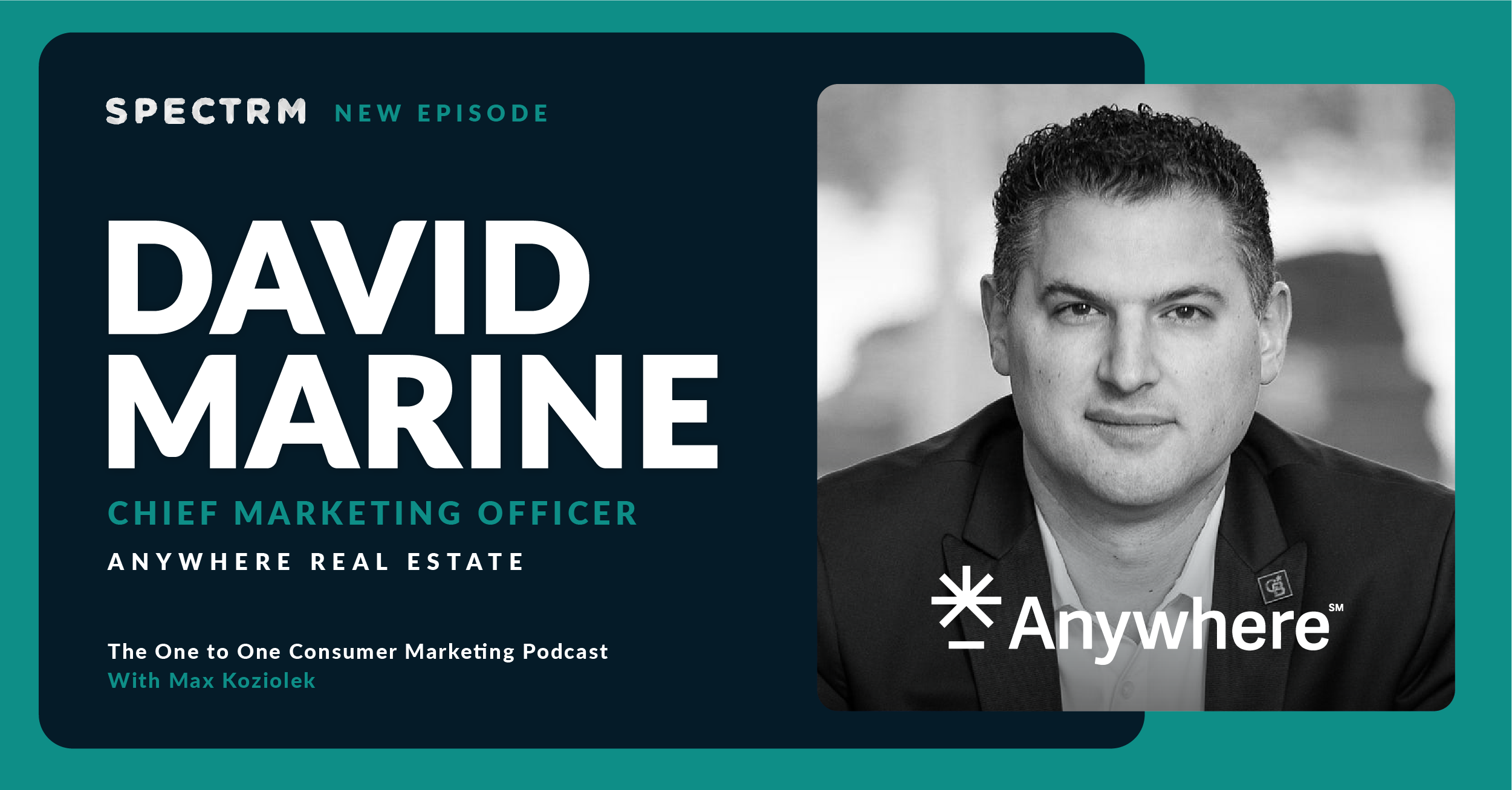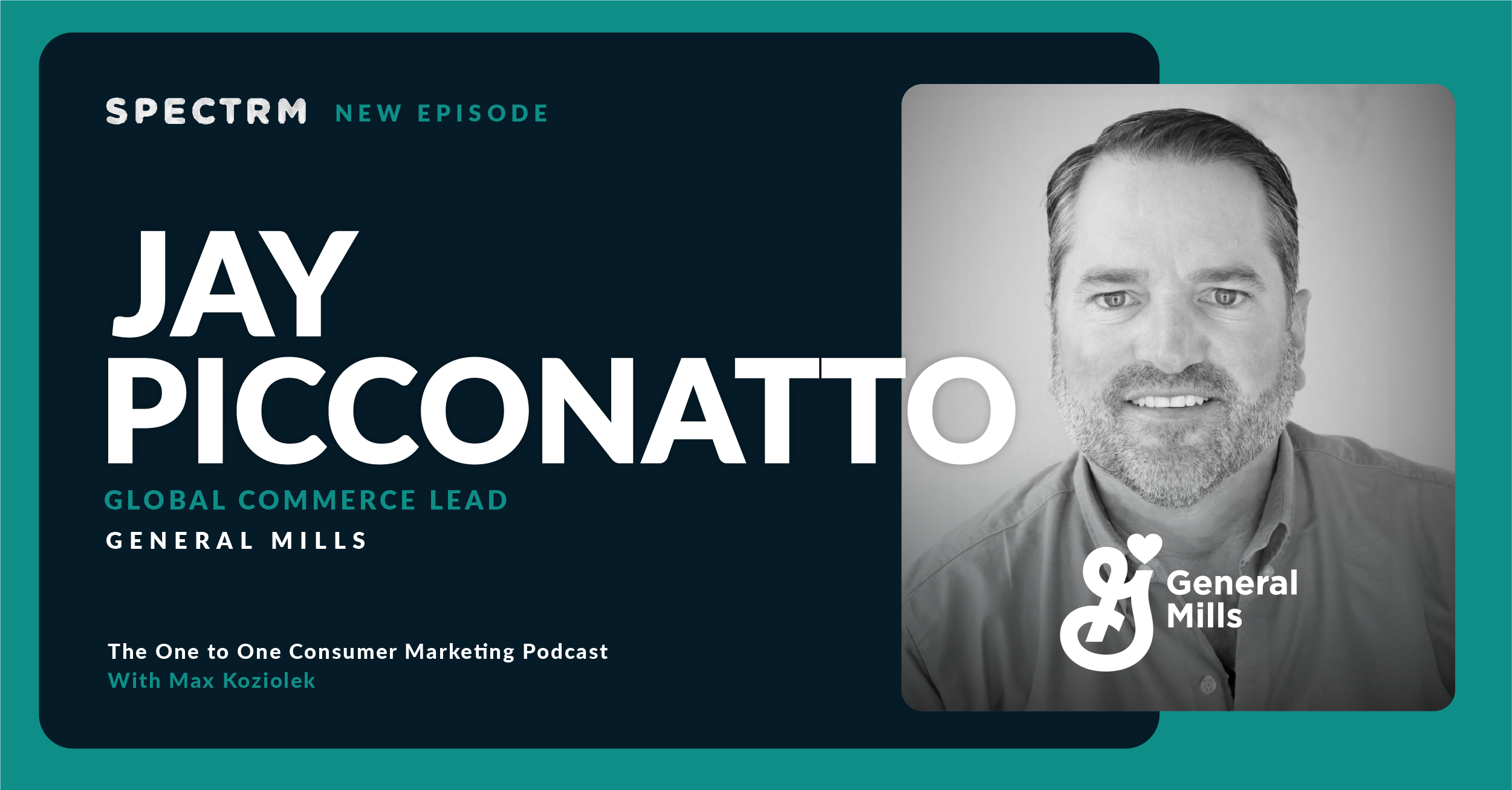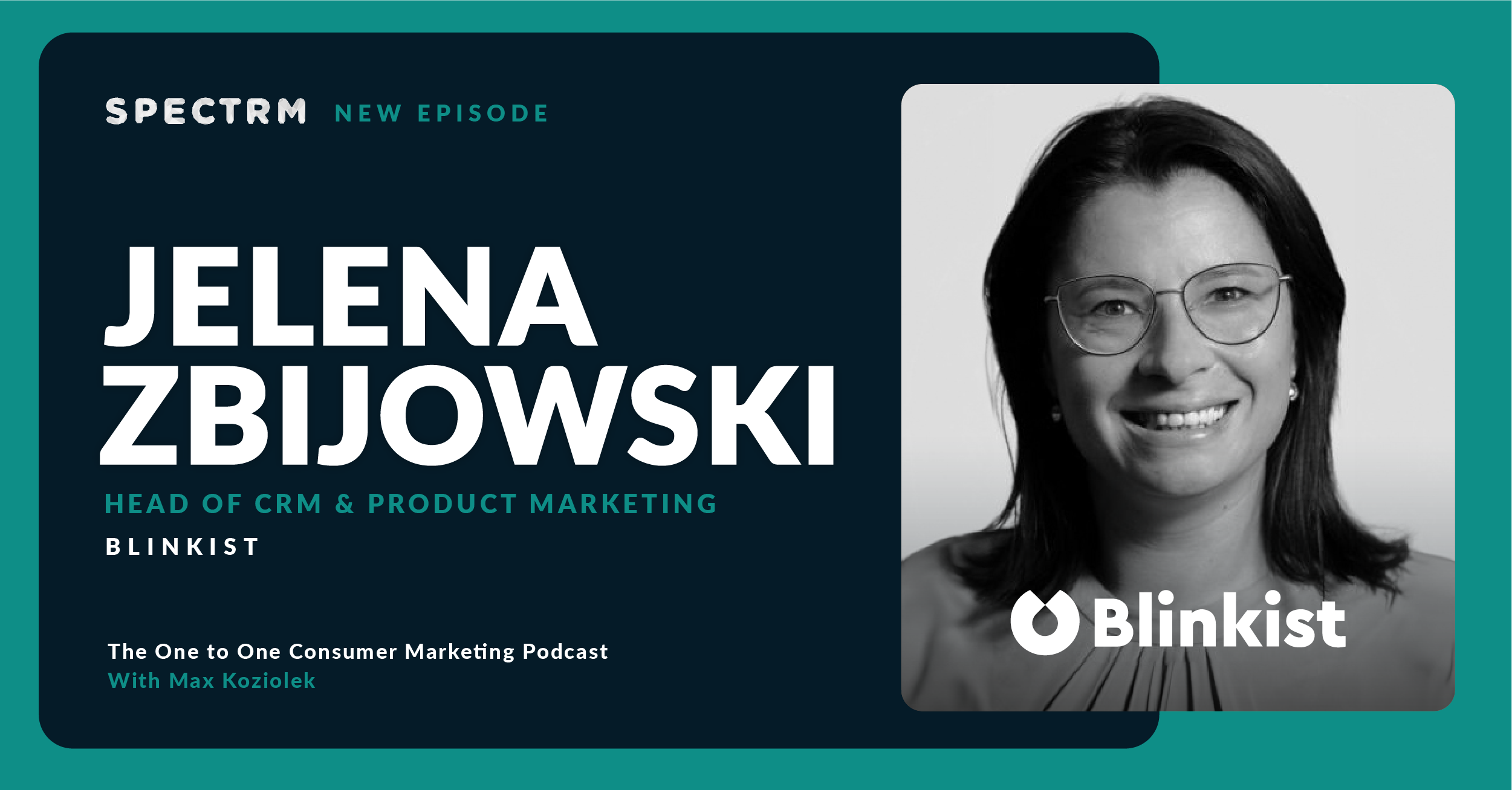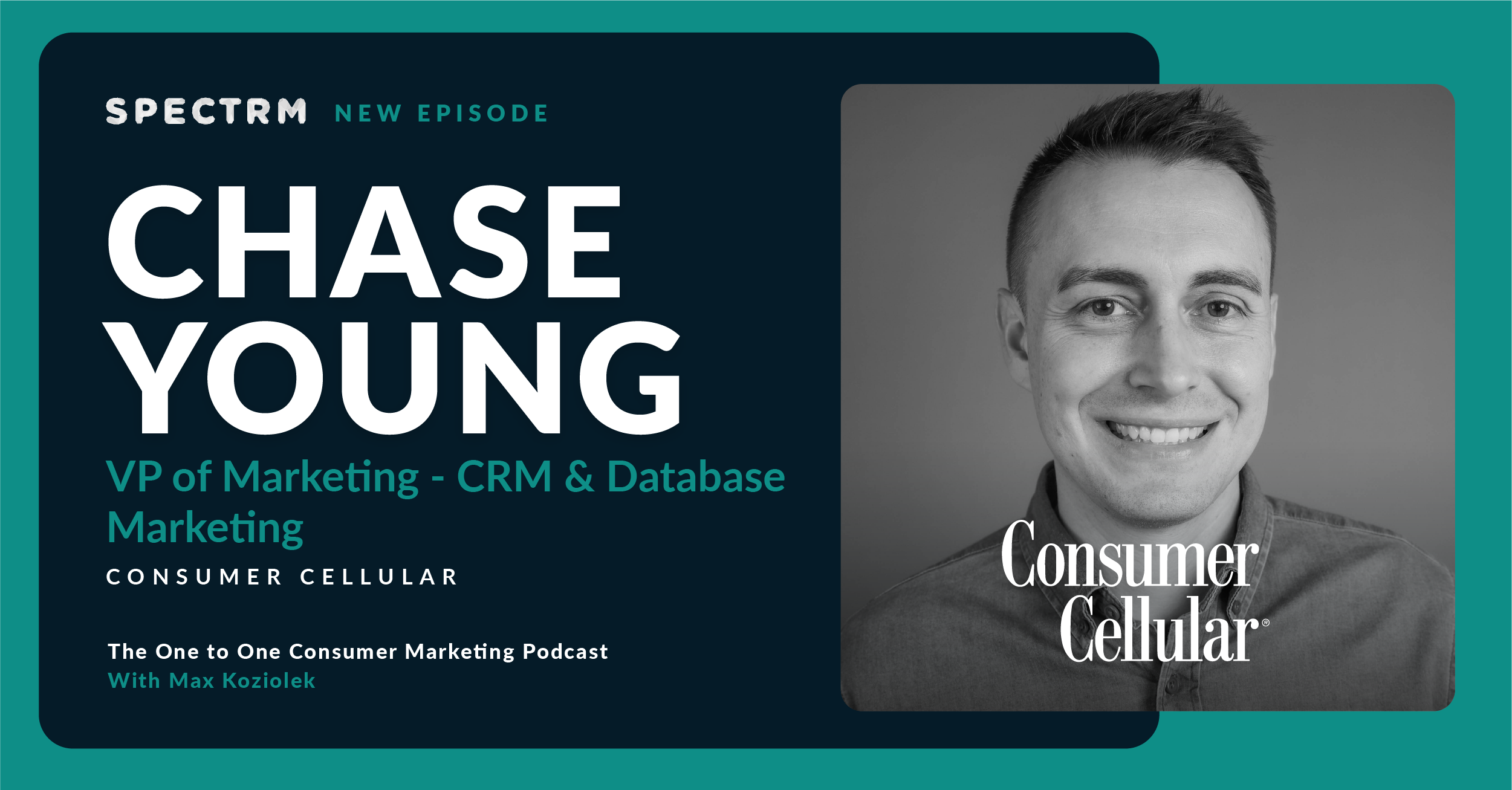Summary
On this episode of One-to-One Conversational Marketing, Ben speaks to Michael Brandt, CEO and Co-Founder of H.V.M.N., Health Via Modern Nutrition.
Michael has quickly scaled the business to multi-million dollars in revenue including a $6M contract with the US Department of Defense. Prior to starting H.V.M.N. he was a professor of brand strategy at the Academy of Art in San Francisco. Michael and his cofounder were awarded Forbes 30 Under 30.
Topics discussed
- How the company transitioned from a $6m defense contract toward a broader, more consumer-friendly market
- The importance of having a broad market vision, but why it’s critical to start with a tight circle of authenticity
- Why it’s important to simplify your messaging the broader your market becomes
- How one day of IRL marketing can tackle months of online A/B testing
- How allowing HVMN’s brand narrative to evolve naturally was critical in their personalization at scale strategy
- What the future of consumer marketing looks like
Guest biography
What is the next page of innovation? The next forward look on the next decade plus is the human body is the most interesting platform for innovation from our point of view. We just started going to first principles, thinking on it.

- Building products with the world’s smartest people.
Company overview
What you put in your body today is the foundation for who you become tomorrow. You’re obsessed with ascending to the top of your field, setting a new world record, or simply cultivating a long, healthy life. We’re obsessed with helping you get there. Through food, we’re redefining the limits of human performance, metabolism, and longevity. Let’s do this together.
Industry: food & beverage services | www.hvmn.com
Subscribe to the podcast newsletter
Transcript
00:00
Welcome to One to One: The Conversational Marketing podcast dedicated to helping modern marketing teams succeed in a messaging first and privacy first world. In each episode, we’ll interview a marketer who is winning with conversational marketing to distill best practices, lessons learned, and actionable takeaways. Here’s your host, Ben Gibert, VP of Marketing, Spectrm.
00:32
Ben Gibert
Hey, everyone, and thanks for listening to One to One: The Conversational Marketing podcast. Today I’m speaking with Michael Brandt, co founder and CEO of HVMN or Health Via Modern Nutrition. Michael, thanks for chatting with me today.
00:47
Michael Brandt
Ben, it’s great to be on forward to a fun conversation.
00:51
Ben Gibert
Yeah, looking forward to this one as well. I have to say this is a starting point. Thanks for the swag. Just for everyone listening, Michael sent me a bit of the product to try out. I’m currently traveling, so I haven’t had a chance to try it, but I’m looking forward to trying it when I get back. Michael, before we get started on the topics in the podcast, for those who haven’t heard of HVMN, can you just explain about what you do?
01:14
Michael Brandt
Yeah. Our company is HVMN Health via Modern Nutrition. I’m the co founder and CEO. Our flagship product is called Ketone IQ. That was born of a $6 million contract we got with Department of Defense Special Operations Command looking at metabolic superfuel. A lot of people are familiar with what a ketone is because they’ve maybe heard about the keto diet, bulletproof, coffee, that thing. Keto diet is interesting. It’s a weight loss diet where you make ketones as a byproduct. It’s like you’re sawing wood and ketones are the sawdust. It turns out that the sawdust itself is metabolic superfuel. Our special operator partners are not doing a keto diet. They’re just drinking our ketone on top of a blended diet and a lot of very active, obviously very active lifestyle and regimen. Same with our elite athletes. We work a lot with Tour de France at this point.
02:12
Michael Brandt
We work with elite athletes across all sports, all leagues and branched out where have been grocery stores or Gwyneth Paltrow has it in her fridge. We have gone from it being this Navy Seal super juice, metabolic fuel, to, hey look, Collagen omega three CBD. Those are freaking everywhere. Ketones. That is the same line of sight that we have. And it’s fun. It’s always, to borrow Jeff Bezos’s words, it’s day one. It’s always day one. We’ve done a lot and there’s so much more out ahead of us in what we’re doing. Really proud of what the team has accomplished in getting through this military project. On our V One, we launched our consumer version in January of this year 2022. And it’s August right now. Just been ramping. It’s been a crazy year. Just ramping. Ton of inbound interest from investors, from retailers who want to carry it.
03:02
Michael Brandt
We run a big direct to consumer business. Ton of increase in volume there. Dealing with a really interesting set of challenges and just buckle in for the ride. Happy to dive into what’s going on.
03:14
Ben Gibert
Yeah, no, that sounds like a crazy journey so far. I think the direct to consumer side and the marketing aspect of your journey is something that we’ll really dive into on the episode today. Before we get there, I feel like I have to ask, you mentioned Navy Seal superjuice and a $6 million defense contract as being kind of the start of this journey. Can you tell us just more about that? Like, how is the company born out of that? I guess also the shift towards consumer and towards a much broader market. Just explain how you decided to do that and the process that it’s been.
03:50
Michael Brandt
Yeah, my co founder and I, we met in undergrad at Stanford, and we’ve been good friends since then. Since undergrad. I worked at YouTube for a couple of years, early YouTube days, if you remember that video gangnam style. First YouTube video to hit a billion views. That was how long ago I worked at YouTube. Awesome. Just learned a ton. It was awesome. Early days of YouTube, learned how every single part of a company, this hyperscaling works. My co founder started and sold his first company, actually, in that period. And then we reunited. We’re both computer science guys, and we’ve always had this passion for biohacking. Looking at our human body as a system. Your body is the most advanced piece of technology that you will ever own. We’re now getting a better insight into our body. We have essentially an API that is on our body where we’re wearing these different wearable sensors, our Oura rings, our Whoops, our Apple Watches.
04:43
Michael Brandt
We’re able to see what our sleep score is. You can send your cheek swab out to get your 23andme genetic profile. We’ve been driving with no dashboard lights on forever, and now the dashboard lights are starting to come on. We can see what’s our oil level, we can see a check engine light. We can see what speed we’re going. So it’s cool. You can see what is your blood glucose level. You can see okay. That’s a really important biomarker for a lot of day to day health and well being, as well as long term health management. Not getting diabetes, cardiovascular disease, Alzheimer’s. I would say we’re in the era of the humans as the next platform. That was the meta of how Jeff and I got into this space. Big computer science guys. Smartphone is cool, but it’s played out. I did not invent snapchat.
05:25
Ben Gibert
Uber.
05:26
Michael Brandt
Whatever. That stuff was already done. What is the next page of innovation? The next forward look on the next decade plus is the human body is the most interesting platform for innovation from our point of view. We just started going to first principles, thinking on it. Okay, everyone’s doing the keto diet. This is back 2016 17. A lot of people are talking about the keto diet. A lot of people are putting butter in their coffee to make their body make ketones. I got really into intermittent fasting. Jeff and I did a seven day long fast with our community. We’re doing all these different biohacks, and one thing that was common across all of them was, look, whether you’re fasted or you’re eating low carb or keto or a lot of strength exercise, I’m also a marathon runner. Any of those contacts, you run low on blood sugar, your body starts making its own ketones.
06:10
Michael Brandt
We asked the first principal question on that, which is, okay, if people are jumping through all these hoops to get their body to make a ketone, why can’t you go to the store and buy a ketone? That was really the genesis of what led to us getting this contract with DoD Special Operations Command. For any kind of product development, you always start in the most narrow use case, right? You always start with the most zoomed in. Like, Uber, when it first launched, was like, black cars for rich people. It became this, like, everyone could have an Uber. You can have an Uber pool, you could have this or that. They got big ones, they got little ones. Like, you start with your very dialed in niche. So for us, it made sense. Special Operators and the DoD were really interested in trackable measurable performance. Hey, I drink this drink, I can measure my ketone levels.
06:58
Michael Brandt
I can measure other biomarkers. The vision is always, okay, well, if that works in that test group to expand it out, everyone is doing metabolism all the time. Any business, you’re going to start with your hyper focused elite, whatever it is. I think for most businesses, the goal is to branch out, right? Nike started making running shoes for really serious track runners. Now they make athleisure. They make basketball shoes for everyone, right? They’re multibillion dollar company like you always start. They say there’s riches and niches. You start hyper focus in, and then you try to take the learnings and grow out. Ideally, the market grows out around you from that insight that you have in your focus group at the start.
07:39
Ben Gibert
Yeah, definitely. I think that’s always where you see some of the most successful products, right, are born of these very specific use cases, very specific audience, and then you’re able to bring that to a broader market. You have to have created a ton of value for that very specific group of people at the start to really begin that feedback process and then launch way beyond that. I think so many things I would love to unpack there. I think this idea of humans as platforms is all stuff that is incredibly interesting and the next technology platform. I don’t want to get into that too much today, because I think for our listeners, while that is an interesting topic, I think they’d be far more interested in how you made that shift from kind of maybe dominating a niche or developing for a niche and then building out to a broader customer base, particularly as you expanded into consumer.
08:30
Ben Gibert
I’d love to hear you talk . You’ve probably had to learn firsthand like, what the consumer market looks like, how you reach, how you go direct to consumer with a health product like this. Can you maybe give us a few insights on what you would just see the state of consumer marketing is today and then how you kind of tackle the challenges that you face with HVMN.
08:52
Michael Brandt
Yeah, a few different insights on it, which is that you can’t boil the ocean. You cannot sell to everyone at once. I think an interesting parallel is nutritional collagen, where a decade ago, collagen wasn’t really on the map. Now they’re like the top couple of brands in the States. They’re just dropping off palaces of stuff at costco. The vision is to be broad market, but there’s a brick by brick play to do that. There can be multiple different correct answers, but I would say the general pattern that you see is you start with this tight circle of authenticity. Like, Red Bull truly started with Snowboarders Mountain Sports, and they were actually on the scene sponsoring the cool people, having them wear the helmet. Dropping off creates a Red Bull at the cool ski shack party. They’re actually in the scene on the scene to where now people drink at all sorts of different occasions, even when most Red Bull is not consumed on the ski slopes anymore.
09:48
Michael Brandt
It still has that feel to it. It still has that authenticity. It’s all about starting with that specific circle. I think you see the best business is building brick by brick. So big insight for us. Yeah. Okay. Getting really specific. That okay. We have this special metabolic superfuel that Navy Seals are into. Okay, well, what starts being adjacent to that? By having authenticity in that core center of the bullseye? You start thinking, like, what’s the next layer around that? You start thinking about, okay, well, what about elite athletes? What about sort of elite athletes? What about people who just own a peloton? What about people who drink athletic greens in the morning? What about people who own an aura or a whoop? Right. Another general axiom I would say I hold true in the space marketing is the time you expand, like, one circle out of your bullseye, your market gets an order of magnitude bigger, and your messaging needs to get an order of magnitude simpler.
10:44
Michael Brandt
With USDOD, we put together hours and documents and, like, a ton of paperwork to make the case. There right. The next layer out. It’s like you don’t have hours, but hey, that’s still a savvy consumer who’s going to spend maybe 20 or 30 minutes researching it sounds like you spend some amount of time looking around ketones, understanding what we’re doing. It’s like a 2030 minutes. Okay, what about when you go to the next layer out, which is like health and wellness or like diet and fitness? Like you’re not trying to run an Iron Man or you’re not trying to be a super serious athlete. That person maybe will spend five minutes with your product. Maybe they’ll spend 25 seconds with your product. Maybe they’ll spend 5 seconds right as you go the layers out. It’s like we’re always thinking out a couple of steps ahead of like, okay, well, what is that experience?
11:23
Michael Brandt
People just pick up five Hour Energy or a Red Bull or a pair of Nikes. They don’t think that hard about it. Within 5 seconds, they see it, they grab it, they know what it is. So we’ve come a long way. We now just have a shot format. It’s a single dose sits in grocery store that sits next to the immunity shots and the probiotic shots. This is a ketone shot. It’s like reasonably easy to grock without listening to a 90 minutes podcast about it. It’s like people can get it. I don’t want to overstate, but that’s definitely the brief of what we are trying to solve there. It’s always about taking what worked at the previous layer and like, okay, how do we make ten times simpler? It’s funny because the game changes, right? Because the DoD does not care what color your packaging is and how pretty your colors are and how smooth your matte finishes.
12:06
Michael Brandt
They don’t care. At a certain point, it kind of flips. Like people don’t care how many IQ points you have and who’s on your board. That the former Chair of the Joint Chief of Staff thinks ketones are great. They care. Oh, wow. Your Maui Sunrise looking pattern on your bottle is nice. That feels like a nice energy lip. Let me take that home and try it.
12:25
Ben Gibert
Yeah, I feel like there are some big points there that you mentioned quite a few times that I think are worth repeating. The authentic, right? Authentic is at the core of all of that really resonating with your core audience, I think another one. It’s easy from a marketing perspective sometimes when you try to go broader to think of different segments, right? Almost different segments as multiple different circles, pools of people that you’re going to reach. What common attributes do they have? How do we speak to them? I think the way that you’re framing that as a bullseye and then layers around it that are kind of moving away from the core audience but that is just ever expanding circles that are larger target markets where maybe you don’t have to be as authentic or the authentic city resonates, but you don’t need to always hone in on the exact reasons why your product was born in the first place.
13:14
Ben Gibert
Simplifying messaging, I think that’s a really important one that so many people get wrong, too, is, okay, this works with this segment, so we’re going to try it in another segment. The reality is that, yeah, as you go broad, you do need to simplify your message a lot. It might be that something like brand packaging has a larger impact than the actual scientific benefits of your product. I’d love to hear you talk just a tiny bit more about how did you simplify your messaging during that process? Right from, like, extremely focused DoD contract making Navy Seals perform at higher levels to then expanding the messaging out to athletes, to then the everyday consumer. Did you see certain messages stay throughout the whole thing, or was it really more of, okay, let’s boil this 15 paragraph pitch down to three bullet points that we can put in a Facebook ad?
14:03
Ben Gibert
Or how did that process work out?
14:05
Michael Brandt
It’s a good question. It’s like the message was already in there in the sense that when Michelangelo is carving out David was already inside of the marble, and all Michelangelo had to do was chip away everything that wasn’t David. I would say the same thing here where, okay, yeah, we have this multimillion dollar contract and seven different subtasks, and we’re looking at blood oxygenation under hypoxia. What is the cognitive efficiency in that scenario? Okay, there’s a lot of stuff there, and I say to get that to a consumer message, that might become, like, clarity or focus. Right. What is the one word to it? It says the same. It’s just like, way more focused down and then allowing people to double click into that and really understand, okay, well, how is this different from Caffeine? How is this different from A nootropic, how is this different from XYZ other thing?
14:54
Michael Brandt
That’s all part of the game, just like, chiseling down what’s working. I would say the framework is there is no framework. You just talk to a lot of customers. I think that’s what it is. I think that a lot of people love to talk about A B testing, and I think that’s true in spirit. What I would say is the best way I found A B test is to put the laptop away and go talk to 5150, talk to a bunch of customers, go somewhere in your target market, try handing out your product for free and see even how that goes. What are the questions that people have before they adopt it? You learn so much, and you find yourself I think it’s almost the way your brain works. You almost get bored of saying the same old song and dance. You’ll kind of randomize it, and then you’ll be like, oh, wow.
15:39
Michael Brandt
This random new way I said it works or it doesn’t work as well if you’re at a trade show or at a CrossFit games or whatever, it’s like, okay, how do you explain this to CrossFit athletes? There should be some way to connect the fact that special operators are into this with better performance in a CrossFit gym. But what exactly is that? You can make, like, months of ecommerce a B testing progress in a day by just getting reps out in front of people and just having that intuition of, okay, cool. People are not grocking when I say X, but they are grocking it when I say Y. You can see people’s eyes light up. They get it right away when you say there’s ten different ways to describe a product. We can call this metabolic superfuel. We can call it the fourth macronutrient. We could call it no sugar, no caffeine, energy boost.
16:25
Michael Brandt
These are all true. It’s just like you can only put one on the front of your packaging. You can only have one above the fold, eight one on your website. One thing I found is that the seeds for that have always come from IRL or even a zoom call. That face to face conversation with a real customer and many real customers.
16:47
Ben Gibert
Yeah, I mean, it’s putting away the incremental, testing and copy, that’s all being created by you and then putting your product in the hands of customers and then having almost like the voice of the customer tell you what’s resonating. Right. That’s always also being able to take what they say, how they react, is always going to give you an insight into what will resonate with other customers and your target audience too. Right? I think that’s definitely something in the digital age. We focus a lot on a B test multivariate testing in digital channels. It’s true that there is a ton of value of talking directly to customers, putting your products in their hands, having your reps talk to them, and then probably, I’m assuming you’ve also used those insights to then build it back into all of your campaigns, all of your messaging, and all of that as well.
17:29
Michael Brandt
Oh, yeah, it all is connected. It’s all the same messaging. Even just knowing what to a B test, like, coming up with good creative for that, I find a lot of it comes on the fly. Another little tactical tip I have is that say you have a friend who’s into your product and you’re at dinner grabbing coffee and your friend is explaining it to their friend or a new person, there’s often going to be that inclination to defer to you, like, oh, Ben, I’m obsessed with your product. Here’s Alice. Ben, tell Alice all about your product. What you would do instead is you say, what, Michael, why don’t you give it a shot? Why don’t you explain to Alice we’d love to hear what you think of it, and that hearing how your customers talk to their friends about it. Super duper interesting because you get this very honest, like, okay, what actually made it through the filter?
18:15
Michael Brandt
What actually resonated? Because that’s how marketing actually works. Again, if you’re really doing a job, your word of mouth is on fire. It’s like, how are people explaining your offering to the next person over? And you can borrow from that. It’s like, okay, well, if that’s what’s making it through the filter, why don’t I just start the messaging there? People are just like, it has this magical feeling. I don’t really know how to explain the science behind it. So, okay, why don’t we just start off by saying, welcome to Ketone Magic. It’s just a little tip that try to say less. As a founder or a marketing leader in general, let observe how your fans of your brand are talking to their friends and try to be as quiet as possible in that conversation and just listen.
18:54
Ben Gibert
Yeah, I think that’s fantastic advice, right? Your evangelists, your most loyal customers are going to be the ones that are probably the best and will communicate the value of your brand in a way that you might not expect too. I mean, you’ve touched on it . One of my next questions was going to be how has your kind of approach to marketing evolved as you founded the company? Are these some of these things that you’ve talked through just now, are those some of the things that have changed? Did you already have those before you founded Hvmmn or has that been like a learning process? Are there any others you’d want to add to that?
19:25
Michael Brandt
I would say always learning. I’ve always been interested in marketing and brand building. Before HVMN, I taught brand strategy at the Academy of Art in San Francisco. Undergrad, I co majored in computer science and product design at the D school there. That gap between technology to actual user experience, how does this technology actually hit culture? What happens when the rubber hits the road? No one actually likes using the Http protocol. No one likes the Internet superhighway. People just like getting stuff done on the Internet. You know what I mean? People just like the experience. People generally want the thing that just works for them. It’s interesting to be able to telescope up and down of like, okay, well, to do something new and novel, you have to have good understanding of the technical landscape, but you also have to be able to map that across that telescope like we’ve been talking about, like making it simpler and simpler.
20:18
Michael Brandt
That’s always been interesting to me for a decade plus, and it’s been fun. A big part of why I was drawn to entrepreneurship was to be able to do it in real time instead of just, like, contributing to a slice of the pie while working at a bigger company or thinking about it in theory, about how the great companies do that. It’s been really fun to do it in real time with a real business. It’s like, okay, we’ve created something new. That new. Nutritional primitives don’t come around every day. Like CBD or Collagen or functional mushrooms are really trending these days. You have breakout primitives like that, like, once or twice a decade. It’s really cool to be in the pilot seat one of these and just saying, okay, well, how do you map that down? How do you map imagine you invented caffeine. How would you go to market with that?
21:05
Michael Brandt
Okay, well, today a billion cups of coffee are drink every day. How would you start if you invented it? It’s like, how would you tackle that problem? It’s a very fun imagine you invented THC. How would you explain that to me? Imagine you invented nicotine. It’s really fun to think of just be in the pilot seat of that. I got to a spot where I felt deep in my bones, like, I understood the path of that. I got it, and I was, like, teaching these classes on it to Master students in San Francisco, and it was just so obvious to me, like, okay, I got to do this, and I got to do something weird. I got to swing for the fences. I don’t want to just launch another popcorn brand that has whatever, Michael’s favorite flavors of popcorn. To me, it had to be something, like, weird that presented an educational gap challenge to it.
21:46
Michael Brandt
I mean, the downside of it, just to speak to elephant in the room, the downside is, like, maybe no one cares, and Ketones never become more than a niche. I don’t know. X niche is 100 million dollar category. It’s not this, like, $10 billion plus category. That’s the risk to take. But that’s I don’t know. It’s kind of the fun of entrepreneur. Like, what if Nike, what if running hadn’t taken off? What if, like, track and field was this niche sport? I’m down to take those odds.
22:11
Ben Gibert
I guess there’s a lot of excitement on that journey, too. Like you said, it’s big risk, big reward. It sounds like you said the academic background, teaching those classes, learning about so many other companies, it’s obviously a solid foundation to then run and do your own thing, too, and see how it pans out. I think you mentioned it. You’re talking 10 billion plus. You have very ambitious goals for what the size of that market will be and what you can do with HVMN with such a huge market and trying to reach all of those consumers. How are you approaching personalization at scale, or how are you personalizing messaging as you move away from the bullseye and get further and further out? You’ve talked about making it simpler. Are there ways that you’re also personalizing that?
22:55
Michael Brandt
Yeah, one of the ways that we personalize it is it’s not even us personalizing it. It’s working with different partners and influencers and retailers and distributors and letting them do whatever they do, like work with a great TikTok influencer or work with someone who has a really massive podcast following in health and wellness and they know their audience better than you do. If you’re aligned that the product is cool and that you want to do some partnership together, let them take it and run with it and then the personalization happens automatically. We do things like we’ll do like custom landing pages on our site. I think marketing has evolved to so much more than what is on your own brand domain that’s cool, like personalize certain verticals that you have. I think there is value there. Your brand also just lives out in the zeitgeist, out in the discussion.
23:43
Michael Brandt
It’s like what people are saying about you behind your back and out there in general. We try to see that and the personalization comes through there.
23:50
Ben Gibert
That’s very interesting. I feel like that’s something that some marketers or some brand owners that would scare the s*** out of them, right. The idea of giving up control of your brand, going through all of those processes of creative approvals, like owning what your brand is going to look and feel like when people are talking about it. I think it speaks to the story you told earlier, right? Like, let your friends tell their friends what your product is and there’s going to be so much you’re going to learn from that. And I think the same thing here. If you let these groups of people who are ultimately, whether they’re evangelists, influencers, friends, take your product and put it out into the culture, you’re going to get a ton of value out of that. I think that’s a very interesting way to think about personalization at scale.
24:33
Ben Gibert
That is not often the response that I get to when I speak to people on the podcast. So yeah, thank you for that.
24:38
Michael Brandt
I think control is an illusion in a lot of ways for us. It’s like, okay, Jake Paul, the YouTuber boxer, he’s a big fan, big user, investor, be it his anti fun, invested in our business, awesome separate side of the frickin galaxy. Gwyneth Telfro is a fan and has it in her fridge. Do I need to care if there is overlap between their audiences? No. It’s like the high school cafeteria. I don’t really care if the jock table and the nerd table and the drama table if they get along, interpersonally with one another. They’re all doing metabolism all the time. If we can transpose our message of Ketone IQ into each table in the high school cafeteria, then we’re doing our job. My final thought on that is that, look, if. You’re picking who to put on your home page or who to do a giant billboard on the side of highway.
25:28
Michael Brandt
Okay, be really picky. Yes, sure, I get it. You’re putting your own brand dollars, your own organic traffic. Yes. When we’re talking about partnerships, are you cool with XYZ Celeb talking about your product? If they like the product, let them talk about it. Get it out there. Their audience likes them.
25:45
Ben Gibert
Yeah. For me, I think the message is pretty clear, right? That those people will know how to speak to their audiences, that they can bring a ton of value to your brand by looping in those people. Don’t be so precious about it. Like you said, maybe if you’re going to pick someone to go on your homepage, have a little more consideration about it, but you don’t have to own the entire influencer network and control everything. I think you’ve touched on a lot of different things that you would, what are the pieces of advice that you would give brands that are looking to engage modern consumers? Think through what you’ve said. I could probably glean three already, but I would love to hear, in your own words, like, if for marketers, for founders that want to engage the modern consumer, want to engage culture at the scale that you’re talking about, what are the top three pieces of advice you would give them?
26:28
Michael Brandt
One off the bat is having a community a following. It should precede launching a product or brand. If you’re in a corporate job and you’re thinking about making the jump or you’re in college or you’re thinking about going into entrepreneurship or starting your own thing, it’s so low stakes to go and start being really active on Twitter. Start posting onto TikTok and Reels, like every day or three times a week. It’s so low stakes because it’s not even going to look to your boss or whatever that you haven’t started another company yet. You’re just like having fun, right? You just say, hey, I have an email list, I have a blog, I have a bunch of followers on Twitter. I just talk about whatever, and I talk behind the director of marketing at my company. And it’s cool. It’s all good. Because if you can go and get 20,000 followers on LinkedIn or 50,000 followers on Instagram, it can only help.
27:18
Michael Brandt
You can only add upside when it’s time to launch a brand. You’re trying to get it out there. You’re trying to have those conversations with customers. You’re trying to get first hundred people to buy it and give you feedback. A lot of entrepreneurs, I think, get into the game because they have a cool invention, which is great. It’s great. They’re kind of scrambling to figure out product market fit or build an audience around it. You also see people who do the opposite, and there’s something to learn from that where build audience before you build the brand. I think it’s a good way to run it. I think also, yeah, it’s good to be loud. We live in this meme attention economy. Attention is the most scarce resource. You got to figure out how to make your product into a meme. We do a lot of little things, like Ketone IQ is like powering.
28:03
Michael Brandt
All the big brains of web three make Ketone IQ the official unofficial drink of all the crypto NFT crowd, because we’re kind of weird from the future. Super fuel from the future. Let’s be part of that crypto think Boy starter pack, right? You get your ETH wallet, you buy some NFT, drink some Ketone IQ. Do you want to meme yourself into the Zeitgeist? The coolest thing with memes is that they do all the talking for you. Just like, throw stuff at the wall and see what sticks. As an entrepreneur, be loud. If things don’t work, it doesn’t matter, because if your content didn’t go viral, no one cares, because no one saw it, because it didn’t go viral. If it does go viral, make a big splash, then you win. So, again, don’t be precious or shy about anything because you can only make points.
28:53
Michael Brandt
You cannot lose points by trying things out. We’ve moved on from this world where it’s like, hey, let me dial in this perfect marketing campaign. X-Y-Z. It’s like it’s so much more about quantity. Just take shots, work with different partners, and then based on what’s working, double down into what’s working. You got to be wiggly. You can’t be stiff.
29:17
Ben Gibert
Yeah, I think that’s good advice for people, right? I mean, marketing is ultimately a feedback process, right? You’re going to get better and better over time, and all the things you mentioned are essentially accelerating that cycle, right? Building an audience first allows you to get that feedback instantly, allowing it to run rampant into culture, like allowing influencers to take over. All of that accelerates the feedback process. Like it gets the name out there, allows you to then pull in all the insights that are coming in. So I think we are precious. It’s easy to spend 10 hours crafting the perfect LinkedIn post, the perfect Instagram shot. Nobody watches it. You’re right. Nobody cares. You should just allow it’s about consistency and about volume at the end of the day to get out there. I think all great advice, especially with the digital world that is so saturated with content and memes and people shouting everywhere about everything.
30:06
Ben Gibert
I think it’s important to keep that in mind as you try to continuously get the message out. We’re getting a little low on time. I’d love to wrap up with what, for you is the future of consumer marketing. You’ve talked a lot about the Zeitgeist, about feeding control to the crowd, letting a brand kind of evolve almost naturally in that way. What does the future look like to you?
30:28
Michael Brandt
The culture is going to continue to evolve and accelerate. Remember a couple of decades ago when Adam Sandler, like Hanukkah song was like the funniest thing in the world for years, and now you go on TikTok and every single video is as funny or funnier. The speed of culture has accelerated. I think that’s a big one. One line I would draw in the sand, too, is I think NFTs are going to make their way into marketing. I don’t know if they’re going to be called NFTs or just drop the NF parts. Call it a token, like bring it down to planet Earth. To me, it’s obvious that this idea of being able to own something online, like, hey, the first 10,000 people that buy X get a token that they can carry and it’s secure and it’s in their online wallet, and that will let them log into the website and get access to future deals.
31:17
Michael Brandt
It will grant them access to certain events. I think it’s obvious that there’s going to be this idea of token ownership, that consumers can have something in their wallet that they own that different brands can choose to interact with or not. I think it’s just something to keep an eye. There’s companies like Novel that are building like Tooling for ecommerce or just brands in general, to be able to interact with that layer without being hyper technical. It’s becoming more frictionless already.
31:45
Ben Gibert
Yeah, I think that also it seems like a natural evolution of a lot of what you’re talking about, too, right? Those idea of community, like tapping into niche groups, but then not in a way where you’re controlling everything and then allowing things to kind of rapidly evolve from there. I think it really ties into how you think about marketing, about brand, about founding a company in general. Michael, that’s all we’re going to have time for today. Thank you so much for coming on the podcast. I think a lot of really interesting conversation about what it is to build a brand in today’s world and how to engage people as you start to broaden that bullseye and get a lot of large target market. Before we wrap up, if people want to follow your journey, hear more about what you have to say. Where should they go?
32:28
Michael Brandt
You can find me on Twitter, Instagram, everywhere. I’m at BDM runner. Our company, Healthy of Modern Nutrition is at HVMN on same Instagram, Twitter, everywhere. Love hearing from people. Love hearing people what you’re building. If you’re training for a marathon or biohacking on something cool, if you’re launching a new brand, love to hear from people. So, yeah, drop a line. Love to be in the community with people.
32:58
Ben Gibert
Yeah. All right, well, you heard Michael Brandt. Listeners, thank you so much for listening, for watching this episode of the podcast. Again, if you want to learn more about Spectrm, what we’re doing about personalization at scale, check out Spectrm on LinkedIn or go to www. Dot. Spectrm.io, Michael, thanks again. It’s been a real pleasure having you on the podcast today.
33:18
Michael Brandt
Thanks so much, Ben. It’s great conversation.
